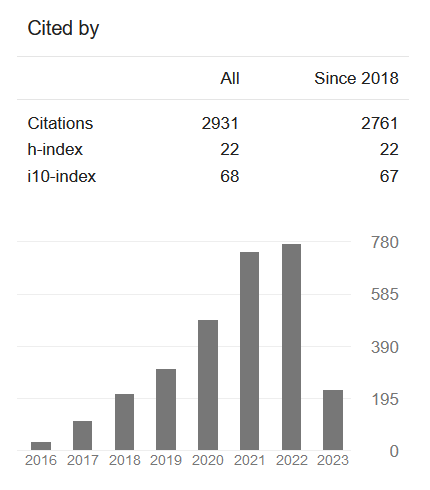Halotolerant microresidents of mangrove swamps are among the pillars of barley development in salt-affected environments( Vol-2,Issue-8,August 2016 ) |
|
Author(s): Badawi H. Mona, Mohy Eldin A., Samir Abd-elmonem, Abdelsadek M. Shaimaa |
|
Keywords: |
|
|
Mangrove- salinity- halophiles- 16S rRNA- biochemical potential- barley- yield. |
|
Abstract: |
|
|
There is evidence to propose a close microbe-nutrient-plant weave that functions as a mechanism to recycle and conserve nutrients in the mangrove ecosystem. Thirty two bacterial isolates representing the microbiome of mangrove community at Safaga, Koseir, Red Sea governorate were secured from sediment and water samples. Based on colony and cell morphology as well as physiological characteristics, the isolates were found to belong to twelve various genera. Nine salt tolerant isolates were further identified using 16S rRNA gene sequence and the phylogenetic tree was constructed which indicated that the majority of isolates are belonging to Bacillus besides the genera Kocuria, Nesiotobacter, Psychrobacillus, Salinivibrio, Serrratia and Vibrio. All strains shared more than 86 % identify with their closest phylogenetic relatives. They were examined for enzyme activities and biochemical reactions. The salt stress-tolerant enzyme activities for acid- and alkaline-phosphatases, amylase, nitrogenase, protease and urease were found variable among the isolates being 0.82 - 28.93; 0.07 - 37.01; 1.05 - 65.32; 0.42 - 0.54; 7.90 - 49.89 and 1.02 - 8.56 nmoles ml-1 culture h-1, respectively. The isolates did possess the ability to produce indole acetic acid (59.05 - 163.21 µmoles ml-1), gibbrillic acid (14.82 - 30.71 µmoles ml-1), exopolysaccharides (0.14 - 1.83 µmoles ml-1) besides solubilizing phosphates (1.15 - 11.62 µmoles ml-1) in 7.2 % NaCl-salted culture media. The pioneeric three halophilic candidates (Bacillus jeotgali, Bacillus oceanisediminis and Psycrobacillus psychrodurans) were experimented as biofertilizers for barley cultivated in soil irrigated with saline water. Salinity dramatically reduced plant growth and yield components. Total biomass decreased by ca. 70 % due to irrigation with saline water. Bacterial inoculation alleviated, to an extent, the toxic impact of high salinity, an effect that was inoculum-dependent. Inoculation significantly enhanced proline accumulation in barley tissues, the quantities in shoots exceeded those of roots being 34.9 and 68.9 mg g-1 Dw in average, respectively. The Na+ concentration significantly increased in saline water-irrigated plants, this was accompanied by decreases in K+ contents and wider Na+: K+ ratios. Salinity adversely affected leaf area, spike and 1000 grain weights. The triple-isolate inoculum seemed the superior in restricting the deleterious influence of high salinity on plant development. |
|
Cite This Article: |
|
| Show All (MLA | APA | Chicago | Harvard | IEEE | Bibtex) | |
Share: |
|

 DOI:
DOI: 



























